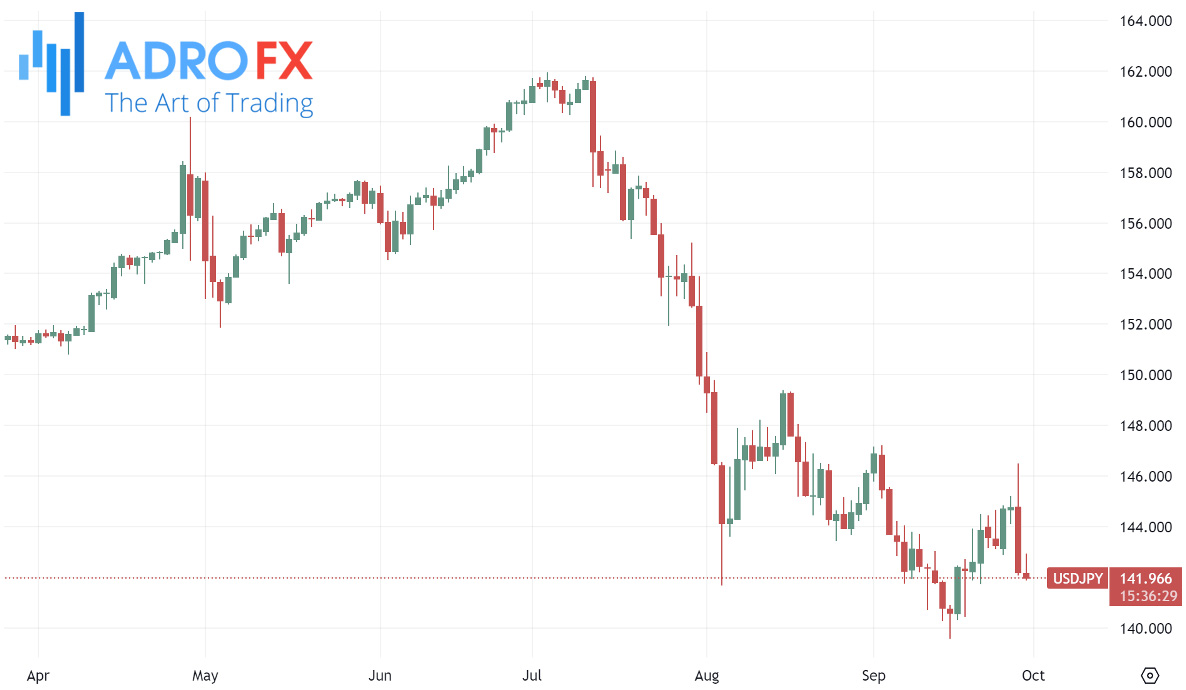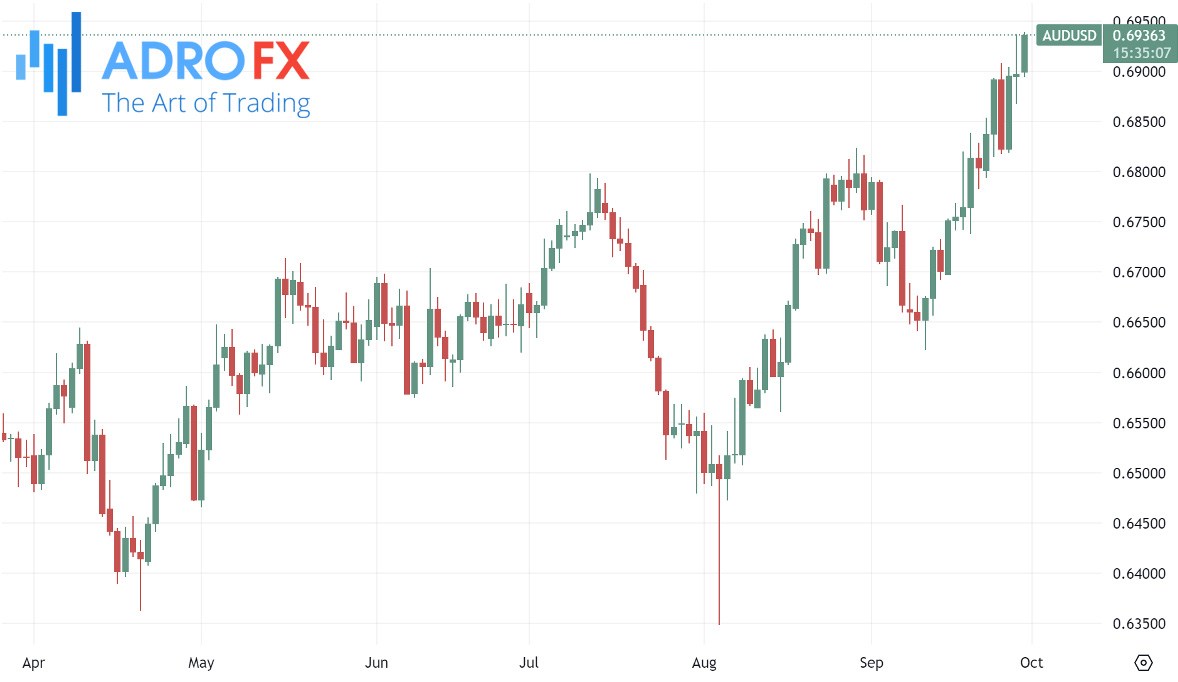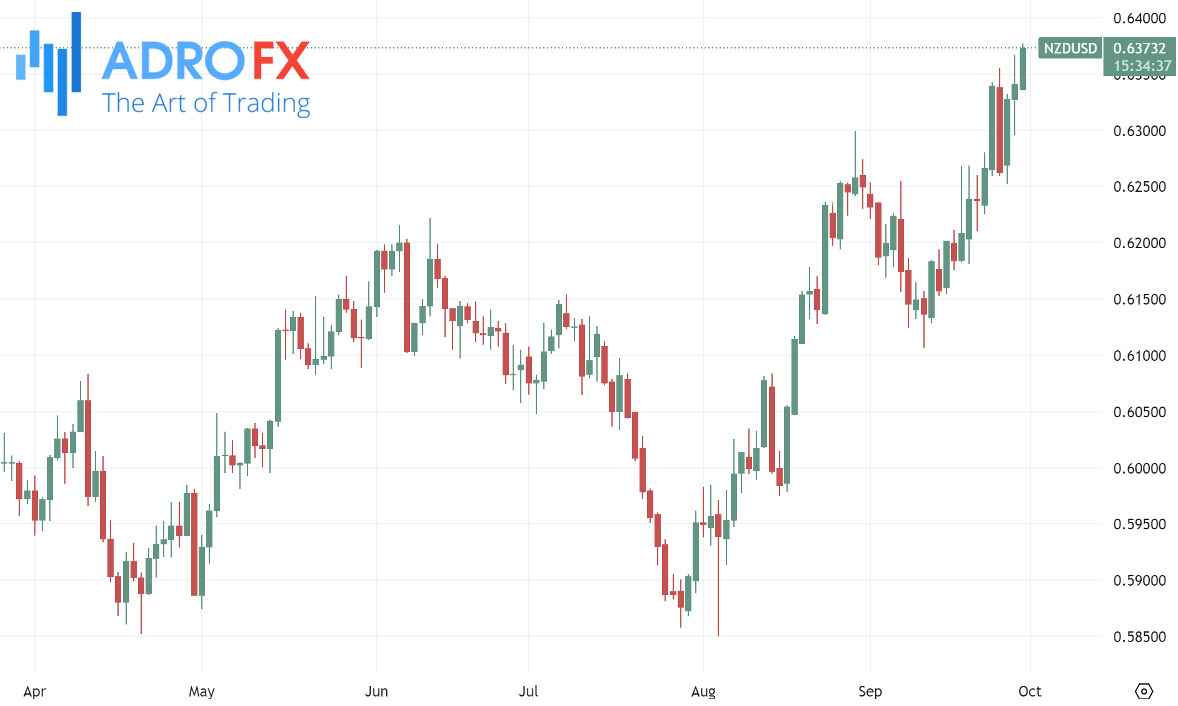Global Markets on Edge: Dow Hits Record High, Gold Struggles, and Currencies React to Stimulus and Geopolitical Tensions | Daily Market Analysis

Key events:
- China - Manufacturing PMI (Sep)
- UK - GDP (QoQ) (Q2)
- UK - GDP (YoY) (Q2)
- USA - Chicago PMI (Sep)
- USA - Fed Chair Powell Speaks
On Friday, the Dow Jones Industrial Average reached record highs, closing with a gain of 137 points (0.3%) at 42,313.00. Energy stocks surged, and signs of faster-than-expected cooling inflation buoyed investor sentiment. In contrast, the S&P 500 dipped by 0.2%, and the Nasdaq Composite, heavily concentrated with tech stocks, fell 0.4%.

Gold prices have remained under selling pressure for two consecutive days as of Monday. However, several factors are expected to limit further declines. Tensions in the Middle East have escalated, with Israel intensifying its conflict near Lebanon's border. This, coupled with Japan's new Prime Minister Shigeru Ishiba potentially calling for a general election on October 27, along with ongoing political uncertainty in the US, may provide support for the safe-haven asset.

Meanwhile, expectations of a dovish stance from the Federal Reserve have kept the US Dollar under pressure, with the greenback near its lowest level since July 2023. However, the positive market sentiment, bolstered by China’s stimulus announcements over the weekend, has prompted some profit-taking on gold ahead of Federal Reserve Chair Jerome Powell's upcoming speech.
The USD/JPY pair saw some dip-buying at the start of the week, recovering part of Friday’s sharp slide from over 146.50, a three-week high. However, prices retreated slightly, trading around the mid-142.00s with an intraday gain of less than 0.25%. The positive market sentiment was further boosted by China’s stimulus measures, including the People’s Bank of China instructing banks to reduce mortgage rates for existing loans. Additionally, Prime Minister Shigeru Ishiba signaled that the Bank of Japan would maintain its accommodative monetary policy to support the country’s fragile economic recovery. These developments, combined with mixed Japanese economic data, have undermined the Yen’s strength, supporting the USD/JPY pair.

Despite upbeat retail sales data, which showed a 2.8% rise in August, weak industrial production in Japan, which contracted by 3.3%, limited further JPY gains. Nonetheless, expectations that the BoJ may hike interest rates later this year have tempered any significant losses in the Yen. At the same time, a subdued US Dollar has capped the upside potential for the USD/JPY pair.
The USD/CAD pair kicked off the new week in a narrow trading range above the 1.3500 level. While geopolitical risks in the Middle East have supported the US Dollar, expectations of a larger interest rate cut by the Bank of Canada weighed on the Canadian Dollar. Nevertheless, China's new stimulus measures and expectations for further Federal Reserve easing have tempered upside movement in the USD/CAD pair.

Despite concerns about slower demand in China, the risk of an expanding conflict in the Middle East continues to support crude oil prices. This, in turn, benefits the Canadian Dollar and helps cap the USD/CAD’s upward momentum. Traders are now closely watching Powell's speech for further cues.
The Australian Dollar extended its rally for the third straight session on Monday, remaining strong despite mixed PMI data from China, Australia’s largest trading partner. Expectations of further easing from the Federal Reserve have weakened the US Dollar, benefiting the AUD/USD pair. However, China’s Caixin Manufacturing PMI fell into contraction territory in September, registering 49.3, down from 50.4 in August, while the services PMI also dropped to 50.3 from 51.6, indicating a slowdown in the services sector.

The US Dollar faced additional pressure after the US Core Personal Consumption Expenditures (PCE) Price Index for August showed a modest 0.1% month-over-month increase, falling short of the expected 0.2%. This data supported the Federal Reserve’s view that inflation is moderating, reinforcing expectations of rate cuts later this year. According to the CME FedWatch Tool, markets are assigning a 42.9% probability of a 25-basis-point rate cut in November, with a 57.1% likelihood of a 50-basis-point reduction.
In New Zealand, the NZD/USD pair has climbed to a new year-to-date high around the 0.6375 region. China’s stimulus measures and expectations of dovish US Federal Reserve action continue to support the risk-sensitive New Zealand Dollar. The subdued US Dollar, along with geopolitical concerns in the Middle East, is also helping the Kiwi, although mixed PMI data from China has dampened some of the bullish sentiment.

Despite these mixed signals, the broader market context suggests a favorable outlook for the NZD/USD pair, as investors await the release of the Chicago PMI and further comments from Federal Reserve Chair Jerome Powell. Traders will likely adjust their positions based on these upcoming events and broader risk sentiment.









